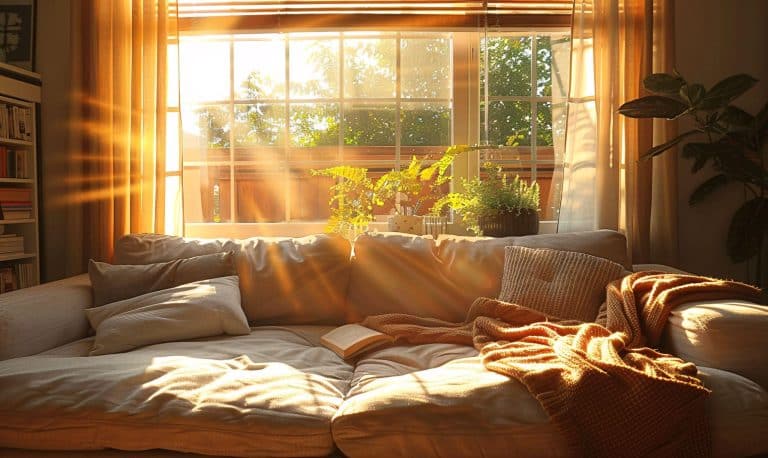Winter has its charms, but it can also be a harsh season for homeowners. The cold months can take a toll on your house, from higher energy bills to unexpected drafts and potential damage. That’s why preparing your home for winter is essential.
Winterizing doesn’t just keep you and your family cozy; it’s a smart investment. By addressing potential problem areas, you can lower your heating costs, prevent damage that leads to expensive repairs, and ensure a safe environment throughout the season.
Let’s delve in and know more!
Heating Systems and Efficiency
Your heating system is the heart of your winter comfort, but it can also be a major source of energy waste. Here’s how to ensure it’s working its best:
Furnace/Boiler Maintenance
Don’t skip that annual inspection and tune-up by a qualified professional. This isn’t just about preventing breakdowns. A well-maintained system runs more efficiently, saving you money on energy bills. Regular maintenance can also help extend its lifespan. Remember to change your air filters regularly, too!
For those relying on fuel oil or propane, your furnace or boiler tune-up is the perfect time to schedule a check with your Residential Fuel Delivery company to ensure you have an adequate supply for the season. If not, they can deliver fuel to your home. Some of them also offer emergency heating oil delivery.
Smart Thermostat
Upgrading to a programmable thermostat gives you precise control over temperatures, saving energy when you’re away or asleep. You can set schedules to match your routines so your house isn’t needlessly heated or cooled when you’re not around.
Many newer models even offer remote control from your phone for added convenience. This lets you adjust temperatures on the fly if your plans change, preventing wasted energy.
Alternative Heat Sources
If you use a fireplace, wood stove, or space heater, prioritize safety. Follow manufacturer instructions carefully, and have chimneys professionally cleaned each year to prevent dangerous creosote buildup.
While these can provide cozy warmth and supplement your main system, be mindful of their limitations. They often heat unevenly, and their efficiency depends on the type and quality of fuel used. Be aware that relying entirely on such sources can lead to substantial energy costs.
Insulation and Drafts
Drafty areas are like holes in that blanket, letting cold air in and making your heating system work harder. Addressing these issues is key to a comfortable and energy-efficient home.
- Insulation Check: Focus on the attic, basement, and any crawl spaces. These are where the most heat tends to escape. Check your area’s recommended R-value (resistance to heat flow) and see if your insulation levels are adequate.
- Air Sealing: Even with good insulation, drafts can undo your efforts. Common culprits are windows, doors, electrical outlets, and gaps around plumbing fixtures. Simple fixes like weatherstripping and caulking can make a big difference.
- Don’t Forget Hidden Drafts: Look beyond the obvious spots. Check for gaps around your fireplace, attic hatch, and even where the walls meet the floor. These smaller drafts add up and undermine your home’s overall comfort.
Protecting Your Home
Winter weather can strain your home’s exterior. Proactive steps now can save you from costly repairs and headaches later.
- Roof and Gutter Inspection: Check your roof for any missing or damaged shingles that could lead to leaks. Make sure gutters and downspouts are clear of leaves and debris, preventing ice dams from forming. Ice dams can cause water to back up and damage your roof, walls, and even your home’s interior.
- Pipe Protection: Frozen pipes can burst and cause extensive water damage. Insulate exposed pipes in unheated areas like basements, attics, and crawl spaces. Before freezing temperatures hit, drain outdoor hoses and shut off water to exterior faucets. If you experience a freeze, know where your main water shut-off valve is located.
- Preventing Ice Dams: Good insulation and attic ventilation help minimize ice dam formation. If issues persist, consider roof edge heating systems. Consult a trusted roofing professional for advice specific to your home.
Safety and Emergencies
Winter weather can bring unexpected power outages and hazardous conditions. Being prepared is essential for keeping your family safe and minimizing stress. Start by ensuring your smoke and carbon monoxide detectors are installed and have fresh batteries.
Having an emergency kit on hand is vital. Include essentials like water, non-perishable food, a first-aid kit, flashlights, warm blankets, and a battery-powered radio. If you rely on medical equipment that requires electricity, make a plan with your healthcare provider in case of extended power outages.
Finally, consider a backup generator if your area experiences frequent or lengthy outages. Research types (portable vs. whole-house) and prioritize safe operation, especially regarding carbon monoxide hazards.
Takeaway
Preparing your home for winter takes effort, but the benefits are worth it. By addressing insulation, heating, hazards, and emergencies, you’ll stay safe and warm and save money. A little work now prevents big surprises later, letting you truly enjoy the winter season.
Remember, some of these tasks are best handled by professionals, so don’t hesitate to seek help when needed. Investing in your home’s winter readiness is an investment in your comfort and peace of mind.









